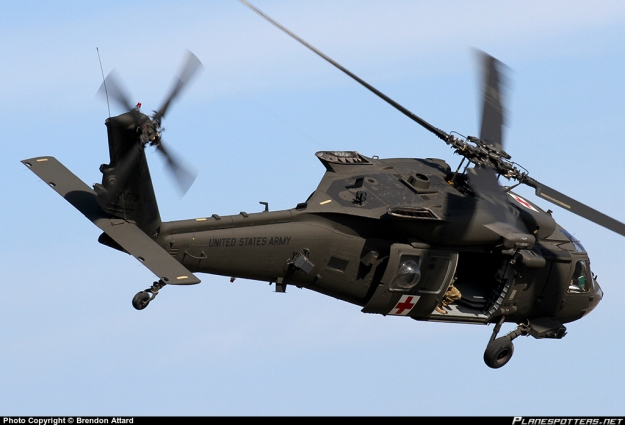Comprehending the Mechanics and Design Behind Uh 60 Helicopters
The UH-60 helicopter, typically recognized as the Black Hawk, stands as a pinnacle of modern-day rotorcraft innovation, personifying a blend of durable engineering and intricate mechanics. As we peel back the layers of the UH-60's design, a world of complex systems and precise engineering comes to light.
History of UH-60 Helicopters
The background of UH-60 helicopters traces back to the late 1970s when the USA Army looked for a versatile and sophisticated utility helicopter to replace its aging fleet. In reaction to this requirement, the Sikorsky Airplane Firm created the UH-60 Black Hawk helicopter. Introduced in 1979, the UH-60 swiftly came to be a staple in military operations as a result of its impressive abilities.
The UH-60 was created to excel in a variety of goals, consisting of army transportation, medical discharge, digital war, and unique operations. Its ability to adapt to different roles made it a useful asset to the U.S. uh 60. Military and various other military forces around the world
For many years, the UH-60 platform has undergone several upgrades and variants to improve its efficiency and keep pace with advancing goal requirements. These helicopters have seen substantial solution in problems such as the Gulf War, Afghanistan, and Iraq, showcasing their reliability and convenience in varied functional environments. The UH-60's rich background is a testimony to its enduring legacy as a top utility helicopter.

Engine and Power Solutions
Utilizing innovative propulsion innovation, UH-60 helicopters are equipped with innovative engine and power systems to make certain optimal performance and dependability in a variety of operational situations. The UH-60, generally called the Black Hawk, is powered by 2 General Electric T700-GE-701D engines, each qualified of supplying up to 1,940 shaft horse power. These turboshaft engines offer the required drive for the helicopter to accomplish its objectives effectively, including troop transport, medical emptying, and fight assistance.

Blades System and The Rules Of Aerodynamics
How do the blades system and aerodynamics of UH-60 helicopters add to their operational performance and trip capabilities? The rotor system of the UH-60 helicopter plays a crucial role in giving lift and propulsion.
The rules of aerodynamics additionally play a vital function in the performance of UH-60 helicopters. The structured fuselage and blades blade style lower drag, allowing the helicopter to accomplish higher rates and much better gas efficiency. The wind resistant style of the UH-60 additionally adds to its capacity to operate in diverse ecological conditions, including warm temperature levels and high altitudes.
Avionics and Trip Control Equipment

In its detailed coordination with the rotor system and the rules of aerodynamics of UH-60 helicopters, the avionics and flight control systems form an important network of innovations forming the aircraft's operational capabilities. In the UH-60, these systems include electronic screens, interaction radios, General practitioner navigation, climate radar, and autopilot systems.
The flight control systems of the UH-60 are in charge of translating the pilot's inputs right into the suitable changes to the rotor system, ensuring stable flight and ability to move. These systems include hydraulic actuators, servos, and computer systems that work together to regulate the tail and major blades, along with other trip control surface areas. By specifically taking care of the helicopter's trip dynamics, these systems allow pilots to do a wide variety of goals, from transport and search-and-rescue to battle procedures, with precision and confidence.
Role and Applications in Air Travel
Avionics systems in UH-60 helicopters encompass an array basics of electronic systems that aid in navigating, interaction, surveillance, and managing numerous aircraft functions. These systems include digital screens, auto-pilot systems, communication radios, GPS navigating devices, and climate radar. In addition, these systems include safety attributes such as auto-pilot modes, terrain awareness alerting systems, and security enhancement systems to boost the general safety and security and operational capacities of the UH-60 helicopters in different objectives, consisting of troop transportation, clinical emptying, his response search and rescue, and airborne firefighting.
Final Thought
To conclude, the UH-60 helicopter is a versatile airplane with an abundant history and advanced design. Its engine and power systems, rotor system, aerodynamics, avionics, and trip control systems all collaborate to make it a effective and trusted device. The UH-60's function and applications in aviation are substantial, ranging from army operations to browse and save objectives. Its continued advancement and use demonstrate its value in the field of aviation (uh 60).
In its detailed coordination with the rotor system and the rules of aerodynamics of UH-60 helicopters, the avionics and flight control systems develop a vital network of technologies forming the airplane's operational abilities.The trip control systems of the UH-60 are accountable for converting the pilot's inputs right into the appropriate adjustments to the blades system, ensuring secure trip and ability to move. Avionics systems in UH-60 helicopters encompass an array of digital systems that help in navigating, communication, tracking, and regulating various airplane features. Furthermore, these systems include security functions such as auto-pilot settings, surface awareness advising systems, and security augmentation systems to enhance the general safety and functional capabilities of the UH-60 helicopters in various objectives, including army transport, clinical emptying, search and rescue, and aerial firefighting.
Its engine and power systems, rotor system, aerodynamics, avionics, and flight important source control systems all function together to make it a reliable and reliable maker.